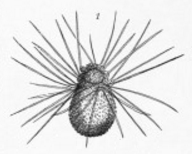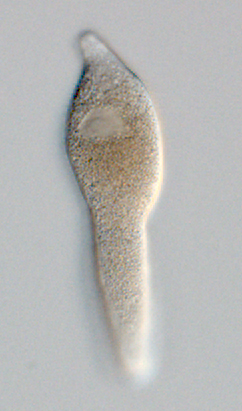|
Zygocystinae
The Zygocystinae are a subfamily of parasites in the phylum Apicomplexa. Taxonomy There are three genera in this subfamily: ''Adelphocystis'', ''Pleurocystis'' and ''Zygocystis''. History This family was created by Bhatia in 1930. Description Species in this subfamily infect worms of the family Lumbricidae. In these genera syzygy occurs extremely early in the life cycle. The oocyst Apicomplexans, a group of intracellular parasites, have life cycle stages that allow them to survive the wide variety of environments they are exposed to during their complex life cycle. Each stage in the life cycle of an apicomplexan organism ... is navicular or biconical and has unusual thickenings at both ends. References Conoidasida Diaphoretickes subfamilies {{Apicomplexa-stub ... [...More Info...] [...Related Items...] OR: [Wikipedia] [Google] [Baidu] |
Monocystidae
The Monocystidae are a family of parasitic alveolates in the phylum Apicomplexa. Taxonomy There are five subfamilies in this family: Monocystinae, Oligochaetocystinae, Rhynchocystinae, Stomatophorinae and Zygocystinae. History This family was created by Bütschli in 1882.Bütschli O, Schwager C (1882) Protozoa. Abt. 1, Sarkodina und Sporozoa. Leipzig: F. C. Wintersche Verlagshandlung Description The hosts of the species in this family are usually oligochaetes. The species in this family generally infect the coelom The coelom (or celom) is the main body cavity in many animals and is positioned inside the body to surround and contain the digestive tract and other organs. In some animals, it is lined with mesothelium. In other animals, such as molluscs, i ... of their hosts. The gamonts are spherical to cylindrical. The anterior end is little differentiated if at all. The oocysts are biconical or boat-shaped. References Apicomplexa families Conoidasid ... [...More Info...] [...Related Items...] OR: [Wikipedia] [Google] [Baidu] |
Eukaryota
The eukaryotes ( ) constitute the Domain (biology), domain of Eukaryota or Eukarya, organisms whose Cell (biology), cells have a membrane-bound cell nucleus, nucleus. All animals, plants, Fungus, fungi, seaweeds, and many unicellular organisms are eukaryotes. They constitute a major group of Outline of life forms, life forms alongside the two groups of prokaryotes: the Bacteria and the Archaea. Eukaryotes represent a small minority of the number of organisms, but given their generally much larger size, their collective global biomass is much larger than that of prokaryotes. The eukaryotes emerged within the archaeal Kingdom (biology), kingdom Asgard (Archaea), Promethearchaeati and its sole phylum Promethearchaeota. This implies that there are only Two-domain system, two domains of life, Bacteria and Archaea, with eukaryotes incorporated among the Archaea. Eukaryotes first emerged during the Paleoproterozoic, likely as Flagellated cell, flagellated cells. The leading evolutiona ... [...More Info...] [...Related Items...] OR: [Wikipedia] [Google] [Baidu] |
SAR Supergroup
SAR is a highly diverse clade of eukaryotes, often considered a supergroup, that includes stramenopiles (heterokonts), alveolates, and rhizarians. It is a node-based taxon (under the Sar name), including all descendants of the three groups' last common ancestor, and comprises most of the now-rejected Chromalveolata. Their sister group has been found to be telonemids, with which they make up the TSAR clade. Harosa is sometimes used synonymously with TSAR. Etymology The name SAR is an acronym derived from the first letters of its three constituent clades; it has been alternatively spelled RAS. The term Harosa (at the subkingdom level) has also been used, with Stramenopiles replaced by its synonym Heterokonta in this variant of the acronym. History of discovery Before the discovery of the SAR supergroup, stramenopiles and alveolates were classified in the supergroup Chromalveolata alongside haptophytes and cryptomonads, being believed to have acquired plastids th ... [...More Info...] [...Related Items...] OR: [Wikipedia] [Google] [Baidu] |
Apicomplexa
The Apicomplexa (also called Apicomplexia; single: apicomplexan) are organisms of a large phylum of mainly parasitic alveolates. Most possess a unique form of organelle structure that comprises a type of non-photosynthetic plastid called an apicoplastwith an apical complex membrane. The organelle's apical shape is an adaptation that the apicomplexan applies in penetrating a host cell. The Apicomplexa are unicellular and spore-forming. Most are obligate endoparasites of animals, except '' Nephromyces'', a symbiont in marine animals, originally classified as a chytrid fungus, and the Chromerida, some of which are photosynthetic partners of corals. Motile structures such as flagella or pseudopods are present only in certain gamete stages. The Apicomplexa are a diverse group that includes organisms such as the coccidia, gregarines, piroplasms, haemogregarines, and plasmodia. Diseases caused by Apicomplexa include: * Babesiosis ('' Babesia'') * Malaria (''Plasmodium'') * Cr ... [...More Info...] [...Related Items...] OR: [Wikipedia] [Google] [Baidu] |
Conoidasida
Conoidasida is a class of parasitic alveolates in the phylum Apicomplexa. The class was defined in 1988 by Levine and contains two subclasses – the coccidia and the gregarines. All members of this class have a complete, hollow, truncated conoid. Gregarines tend to parasitize invertebrates with the mature gamonts being extracellular; the coccidia mostly infect vertebrates and have intracellular gamonts. Description A conoid is found in most species and when present forms complete but truncated cone. Sexual and asexual reproduction are present in life cycle of all species. Each zygote normally forms an oocyst wall within which it undergoes meiosis. This is sometimes followed by mitosis. This process of sporogony produces mobile vermiform infectious sporozoites. Multiple mitotic divisions ( schizogony) also occur during merogony of the feeding stages (trophozoites) and during gametogony. Motility Microgametes of some species are flagellated. Locomotion of other gam ... [...More Info...] [...Related Items...] OR: [Wikipedia] [Google] [Baidu] |
Gregarinasina
The gregarines are a group of Apicomplexan alveolates, classified as the Gregarinasina or Gregarinia. The large (roughly half a millimeter) parasites inhabit the intestines of many invertebrates. They are not found in any vertebrates. Gregarines are closely related to both '' Toxoplasma'' and ''Plasmodium'', which cause toxoplasmosis and malaria, respectively. Both protists use protein complexes similar to those that are formed by the gregarines for gliding motility and for invading target cells. This makes the gregarines excellent models for studying gliding motility, with the goal of developing treatment options for both toxoplasmosis and malaria. Thousands of different species of gregarine are expected to be found in insects, and 99% of these gregarine species still need to be described. Each insect species can be the host of multiple gregarine species. One of the most-studied gregarines is '' Gregarina garnhami''. In general, gregarines are regarded as a very successful group ... [...More Info...] [...Related Items...] OR: [Wikipedia] [Google] [Baidu] |
Eugregarinorida
The Eugregarinorida are the most large and diverse order of gregarines — parasitic protists belonging to the phylum Apicomplexa. Eugregarines are found in marine, freshwater and terrestrial habitats. These species possess large trophozoites that are significantly different in morphology and behavior from the sporozoites. This taxon contains most of the known gregarine species. These protozoa are common parasites of many invertebrates including insects and polychete worms. Taxonomy Eugregarinorida has three recognised suborders: Aseptatorina, Blastogregarinorina and Septatorina. The intestinal eugregarines are separated into septate — suborder Septatina — and aseptate — suborder Aseptatina — depending on whether the trophozoite is superficially divided by a transverse septum. The marine gregarines are the most poorly studied members of this order. The eugregarines have been classified into 27 families with ~244 genera, 14 of which have more than 25 species each. There ... [...More Info...] [...Related Items...] OR: [Wikipedia] [Google] [Baidu] |
Aseptatorina
''Aseptatorina'' is a suborder of parasitic alveolates of the phylum Apicomplexa Taxonomy There are eleven families recognised in this suborder. There are ~400 species in these families. Five families — ''Allantocystidae'', ''Diplocystidae'', ''Enterocystidae'', ''Ganymedidae'' and ''Schaudinnellidae'' — have only one genus. ''Aikinetocystidae'' has two genera. Two families in this suborder — ''Ganymedidae'' and ''Thiriotiidae'' — infect crustacean Crustaceans (from Latin meaning: "those with shells" or "crusted ones") are invertebrate animals that constitute one group of arthropods that are traditionally a part of the subphylum Crustacea (), a large, diverse group of mainly aquatic arthrop ...s. The taxonomy of this suborder may be in need of revision as it has been shown based on SSU 18S rDNA sequences that four families — ''Ganymedidae'' from the Aseptatorina and ''Cephalolobidae'', ''Porosporidae'' and ''Uradiophoridae'' from the Septatorina appear to form a ... [...More Info...] [...Related Items...] OR: [Wikipedia] [Google] [Baidu] |

